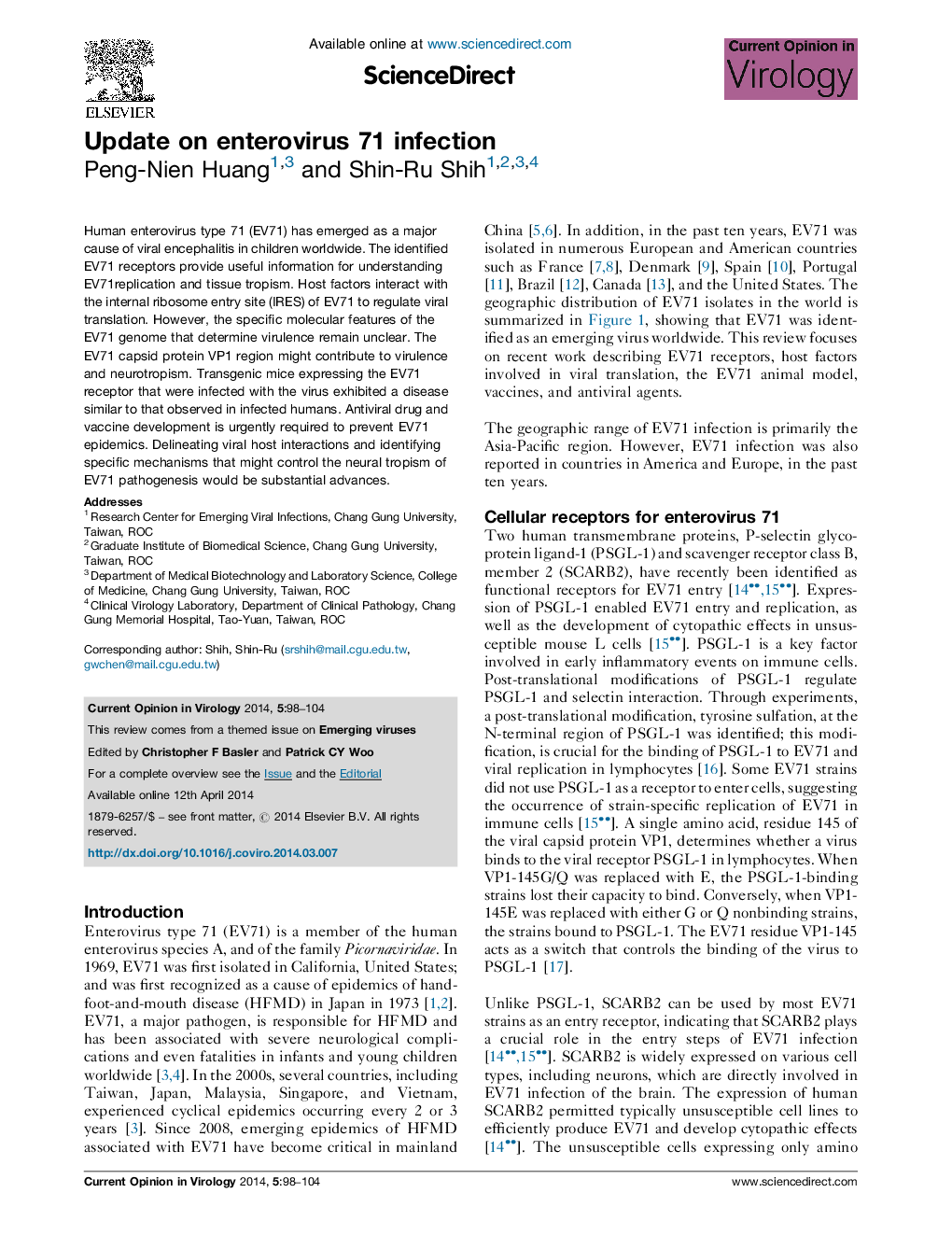| Article ID | Journal | Published Year | Pages | File Type |
|---|---|---|---|---|
| 5806812 | Current Opinion in Virology | 2014 | 7 Pages |
â¢EV71 infection occurred in the Asia-Pacific region and in several American and European countries.â¢Various host proteins modulate EV71 viral translation and replication.â¢The EV71 VP1 region may contribute to virulence and neurotropism.â¢Transgenic mice expressing the EV71 receptor SCARB2 can be used to model some clinical manifestations of human infections.â¢An inactivated EV71 vaccine in a phase III clinical trial exhibited high protection efficacy.
Human enterovirus type 71 (EV71) has emerged as a major cause of viral encephalitis in children worldwide. The identified EV71 receptors provide useful information for understanding EV71replication and tissue tropism. Host factors interact with the internal ribosome entry site (IRES) of EV71 to regulate viral translation. However, the specific molecular features of the EV71 genome that determine virulence remain unclear. The EV71 capsid protein VP1 region might contribute to virulence and neurotropism. Transgenic mice expressing the EV71 receptor that were infected with the virus exhibited a disease similar to that observed in infected humans. Antiviral drug and vaccine development is urgently required to prevent EV71 epidemics. Delineating viral host interactions and identifying specific mechanisms that might control the neural tropism of EV71 pathogenesis would be substantial advances.
